NTHU Cracks the Dioxin Pollution Challenge
2023.12.19
National Tsing Hua University (NTHU) in Taiwan has achieved a milestone in addressing persistent organic pollutants (POPs), including the "Century Toxins"—dioxins, PCBs, and pesticides (DDT). These highly toxic and hard-to-degrade pollutants have posed a major threat to ecosystems and human health. The team simulated atmospheric ozone-ultraviolet light reactions to transform dioxins into harmless oxalic acid at room temperature.
The research, which offers a promising solution to the global challenge of POPs, appeared in the December 2023 issue of the esteemed journal Green Chemistry, published by the United Kingdom's Royal Society of Chemistry. Led by Professor Kuo Chu Hwang (黃國柱) from the Department of Chemistry, the research team was assisted by the expertise of Ph.D. student Ayyakkannu Ragupathi and postdoctoral researcher Vaibhav Pramod Charpe.
The study primarily focuses on degrading pollutants like dioxins, known for their resilience to high temperatures and resistance to traditional decomposition methods. Dioxins pose severe risks to both the environment and human health, triggering gene mutations, congenital disorders, miscarriages, cancers, and neurological disorders.
Hwang's team simulated ozone's photochemical reaction conditions in the atmosphere, utilizing an ozone generator and UV light in the laboratory to decompose the hard-to-degrade POPs. The simulation led to the discovery of a gentle yet effective method for breaking the persistent pollutants into non-toxic oxalic acid.
The research team demonstrated the ability of this method to reduce the concentration of "2,3,7,8-tetrachlorodibenzo-p-dioxin" by 47% after 16 hours of mercury lamp exposure. Additionally, the chemical "hexachlorobenzene" underwent a remarkable 98% decomposition into non-toxic oxalate after 20 hours of ozone-ultraviolet irradiation.
Hwang emphasized the interdisciplinary nature of this research, which seamlessly merged atmospheric chemistry with organic chemistry to craft an innovative solution. The atmospheric reactions were mostly driven by hydroxyl radicals, known as "atmospheric cleaners," to oxidize gaseous pollutants and contribute to their degradation or elimination.
The adverse effects of POPs on both the environment and human health are well documented. Hwang recalled the PCB poisoning incident in Taiwan in 1979, where over 2,000 people consumed rice bran oil contaminated with PCBs, resulting in 16 deaths and long-term genetic repercussions for the affected and their descendants.
Additionally, the widespread use of Agent Orange during the Vietnam War led to severe deformities in 150,000 Vietnamese newborns, perpetuating the impact across generations. These incidents underscore the urgency of finding solutions for the elimination of POPs.
The research outcome showcases the potential of this environmentally friendly approach to tackle longstanding challenges in organic chemistry. Hwang anticipates that this research will pave the way for numerous practical applications, significantly contributing to global efforts to mitigate the environmental burden from these POPs.
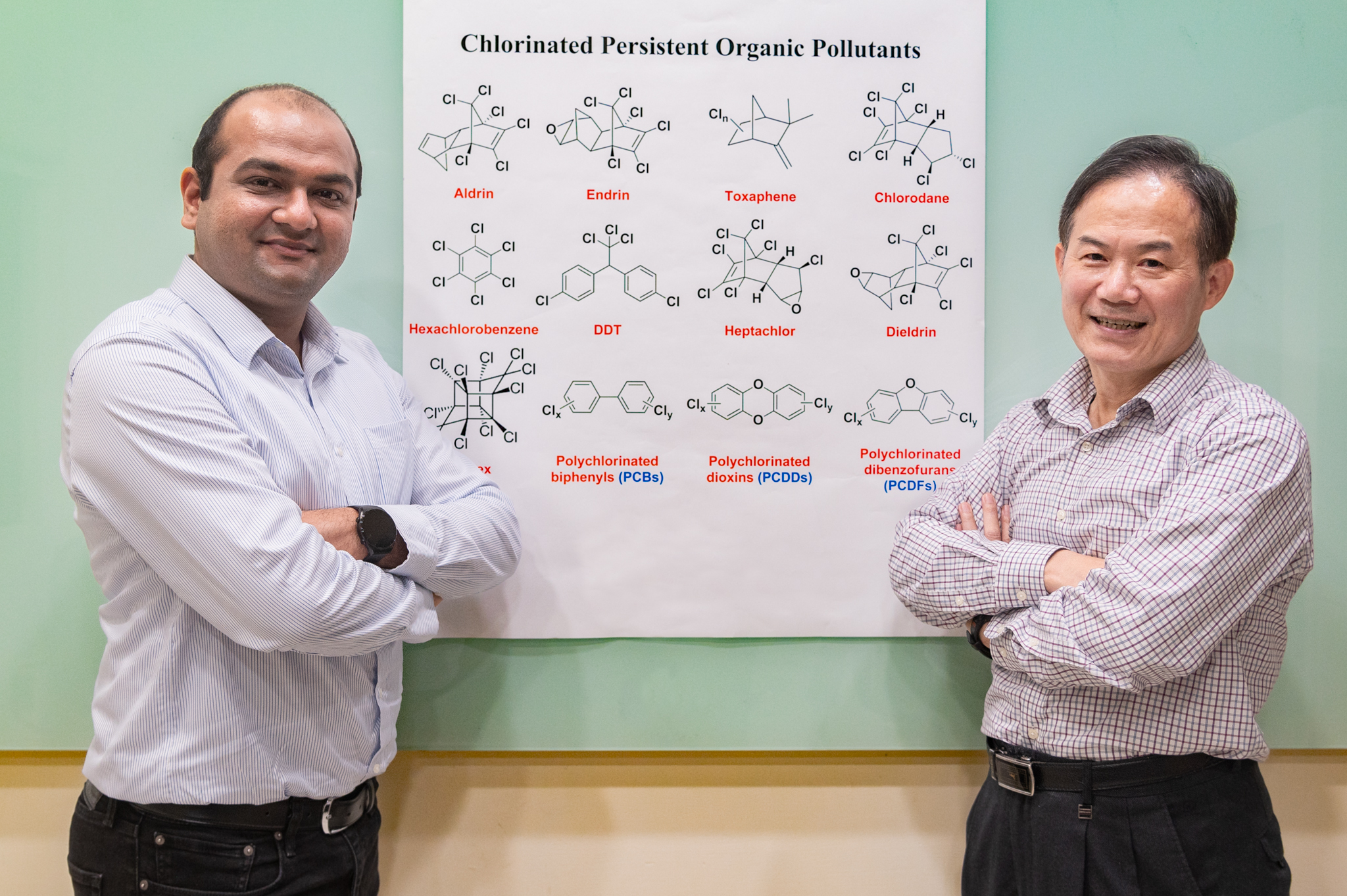 NTHU Distinguished professor Kuo Chu Hwang (黃國柱) (right) and postdoctoral researcher Vaibhav Pramod Charpe have developed a method to successfully decompose persistent organic pollutants (POPs) such as dioxins.
NTHU Distinguished professor Kuo Chu Hwang (黃國柱) (right) and postdoctoral researcher Vaibhav Pramod Charpe have developed a method to successfully decompose persistent organic pollutants (POPs) such as dioxins.
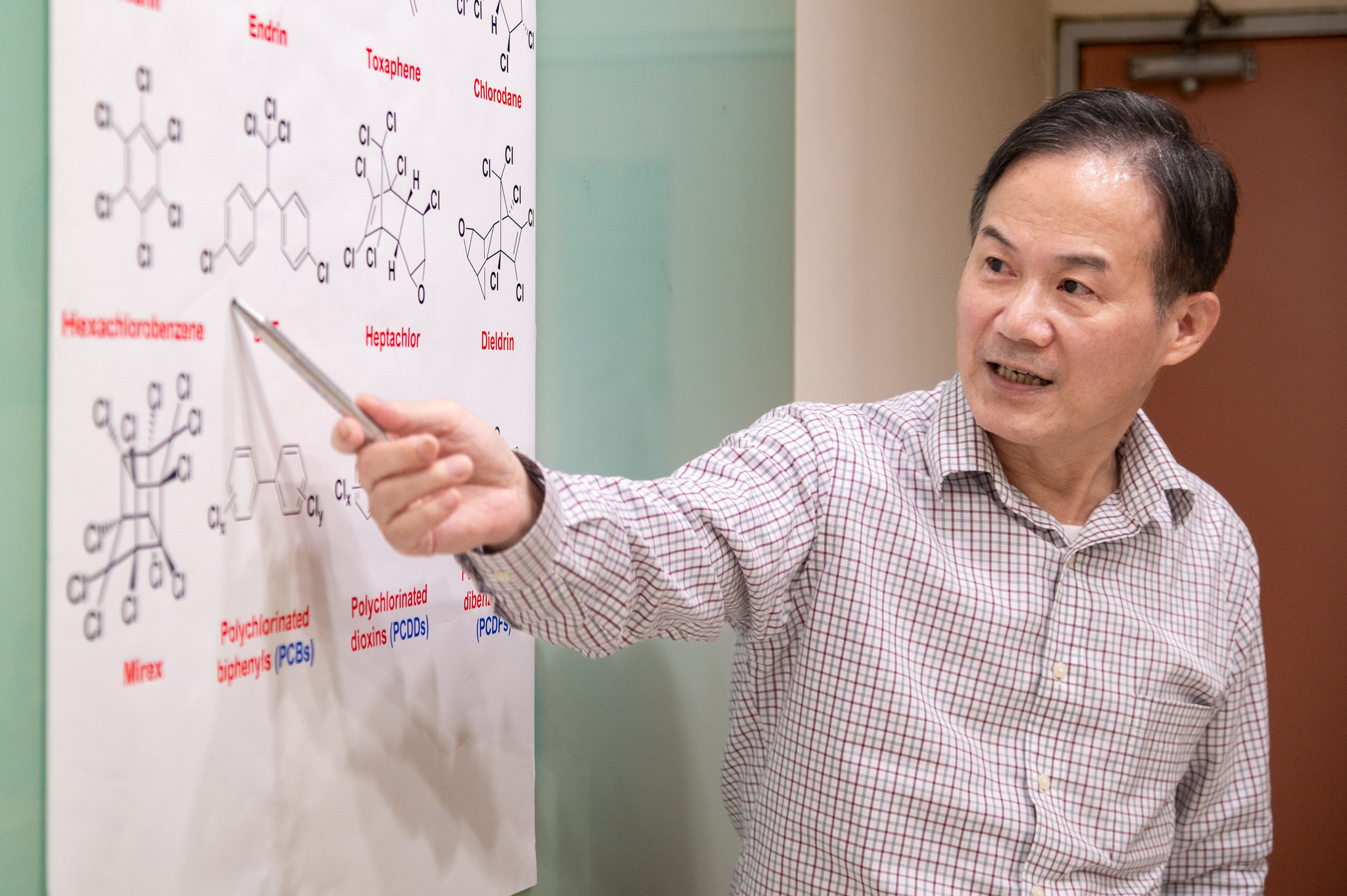
Distinguished professor Kuo Chu Hwang (黃國柱) explains the chemical structure of persistent organic pollutants (POPs), which do not decompose easily.

NTHU Distinguished professor Kuo Chu Hwang (黃國柱) (right) and postdoctoral researcher Vaibhav Pramod Charpe employ photochemical reactions to degrade persistent organic pollutants (POPs).

NTHU Distinguished professor Kuo Chu Hwang (黃國柱) (right) and postdoctoral researcher Vaibhav Pramod Charpe decompose persistent organic pollutants (POPs) such as dioxins.
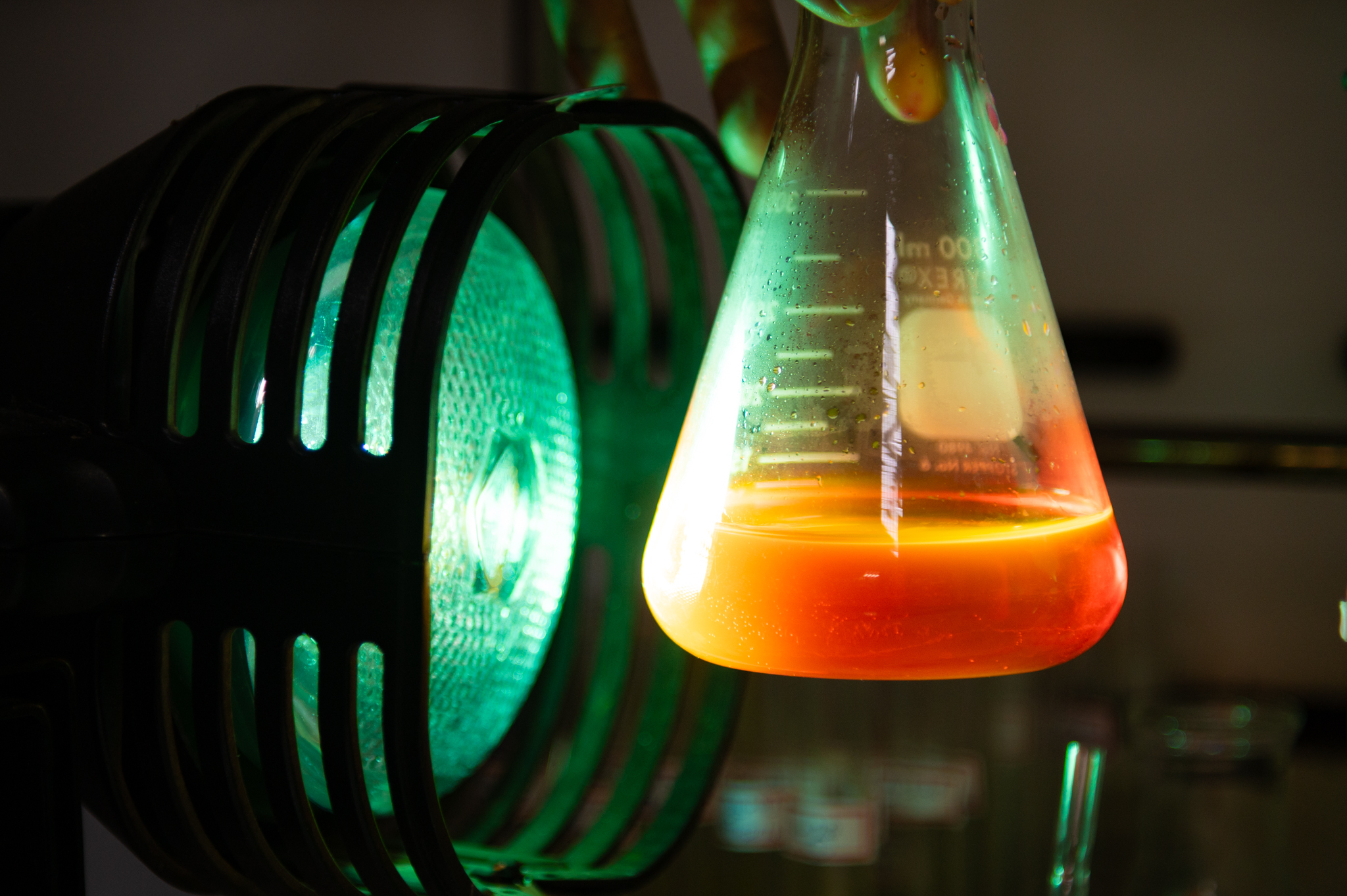
Under ultraviolet light irradiation, ozone decomposes to generate atomic oxygen atom and react with water molecules to produce hydroxyl radicals that can decompose persistent organic pollutants (POPs) in the bottle.
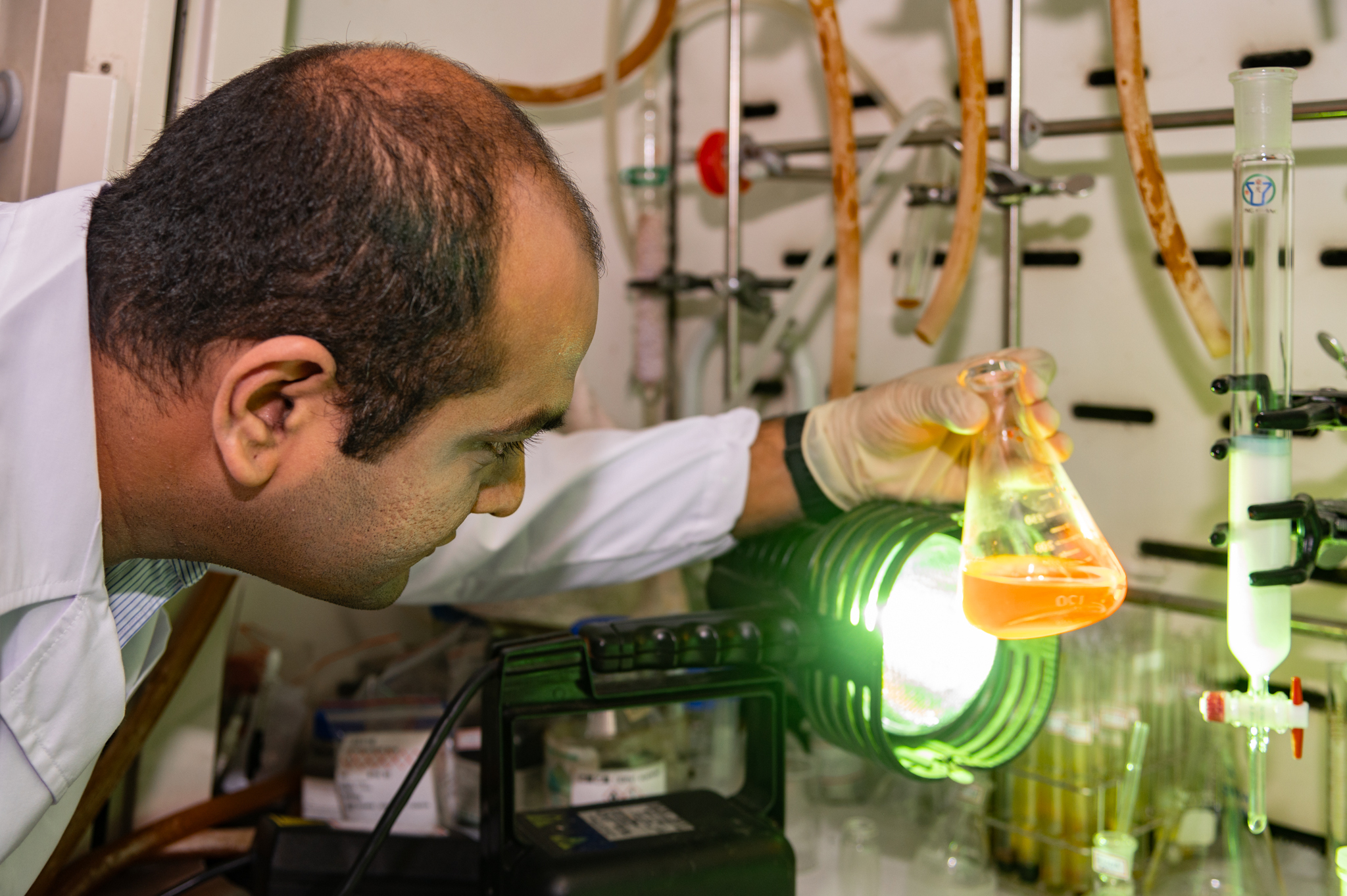
The NTHU team employs ozone-ultraviolet light irradiation to decompose persistent organic pollutants (POPs).
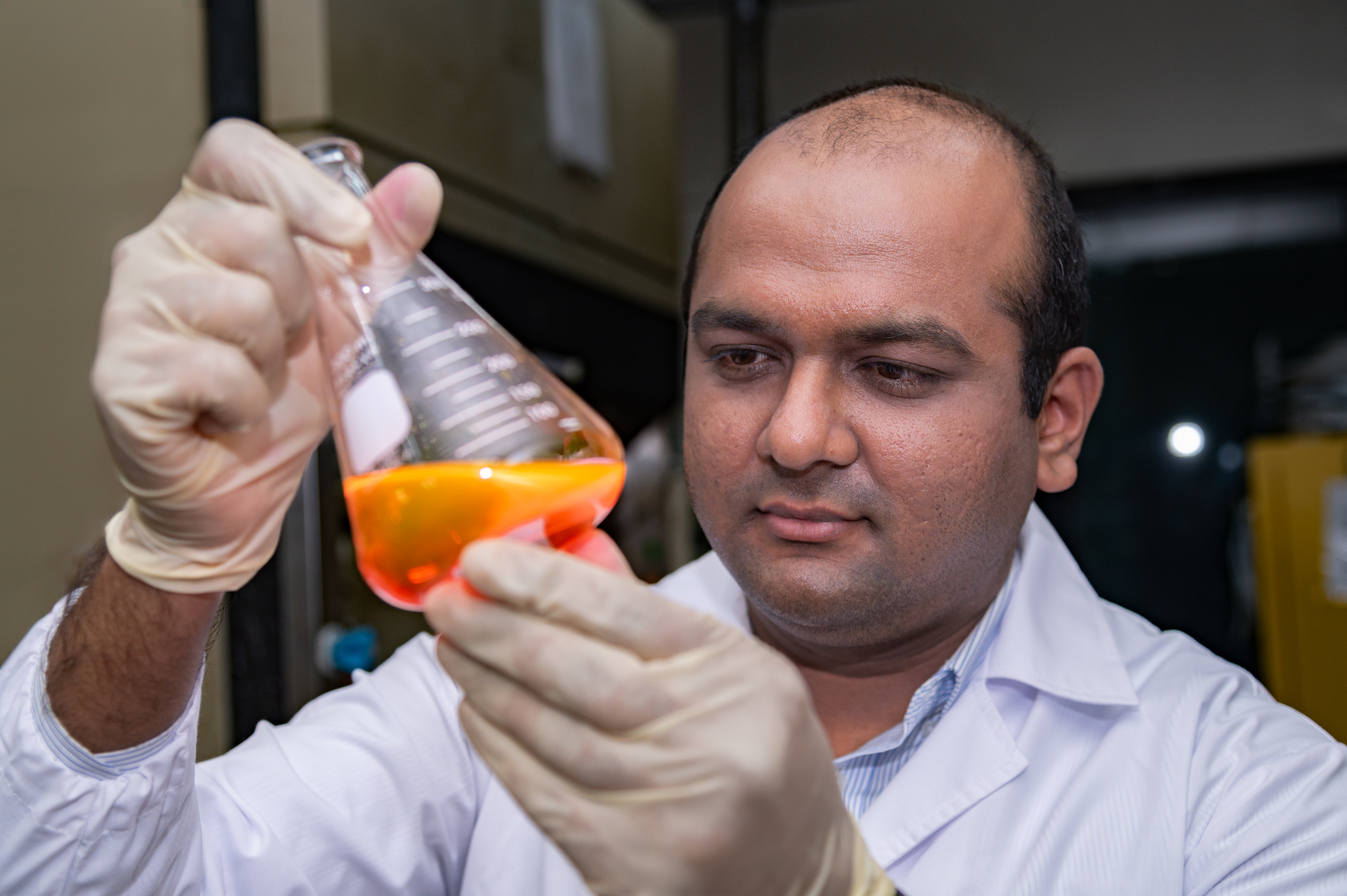
Postdoctoral researcher Vaibhav Pramod Charpe from NTHU examines persistent organic pollutants (POPs) that have been dyed.







